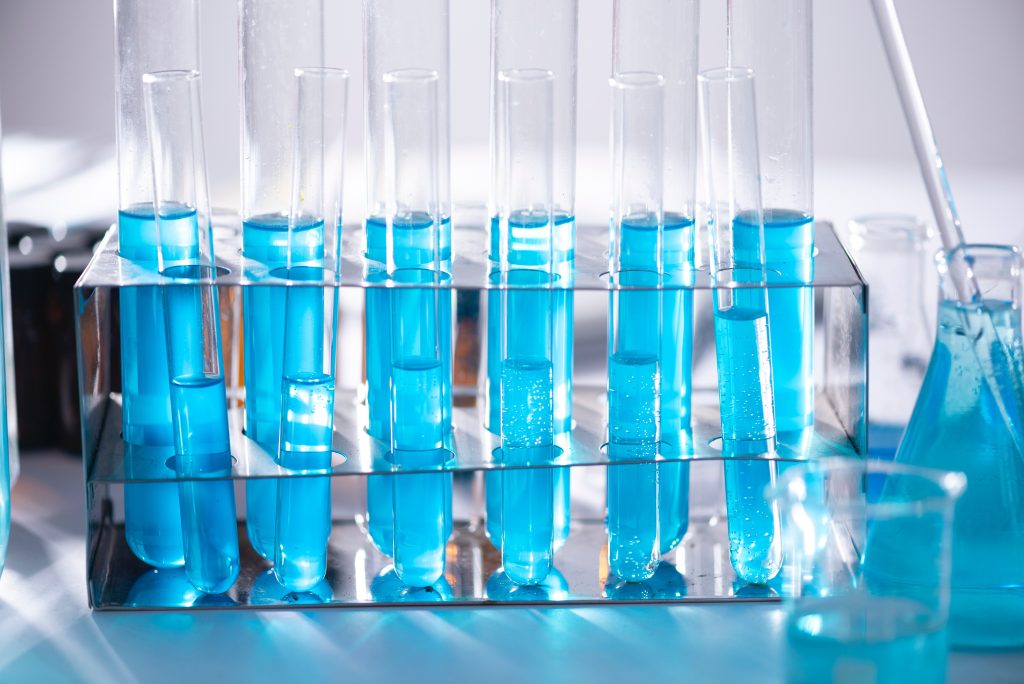
NOTE: The term sexually transmitted infection (STI) is often used interchangeably with sexually transmitted disease (STD); this article will use STI to represent the group of conditions that are traditionally acquired through sexual contact.
Sexually transmitted infections (STIs) are a major public health concern around the world. In fact, there are more than one million new cases of STIs worldwide each day.1 In addition, the United States has one of the highest rates of STIs, with over twenty million new cases of sexually transmitted infections per year in the US alone.2 One way to drastically reduce the negative impacts of STIs on both the individual and the population is through STI testing. STI testing is important not only for an individual’s sexual health, but also for community health around the world. Getting tested for STIs on a regular basis reduces the risk of suffering from negative side effects and passing those infections on to other people. Although STIs are usually thought of as infections passed through sexual contact, it is crucial to note that there are non-sexual transmissions of STIs.
This article explains the basics of STI testing, the benefits associated with getting tested, different types of tests, and some of the limitations of current testing technology. Often, the first step to STI testing is finding a doctor. A great resource is a county health clinic or a primary care provider. Even if that specific doctor does not perform STI tests, they can provide further information regarding testing in the area. Residents of the United States can also visit the Planned Parenthood website to locate a local clinic. There are also home tests available, like those mentioned here at https://www.testing.com/. However, home tests can vary greatly in quality and accuracy, so before purchasing a home test, one should verify that the test comes from a reputable source and meets their individual needs.
Table of Contents
What is STI Testing?
Sexually transmitted infections are infections that are passed from one person to another through unprotected sexual contact.3 Some common STIs are listed below along with their corresponding test. If left untreated, STIs can affect an individual’s sexual health far past the point of initial infection, possibly interfering with fertility and comfort. Risky behaviors, like having sex without a condom, carry a higher risk of contracting an infection. Although some STIs have clear symptoms that can be easily recognized, many present no obvious signs, making it virtually impossible to know if one is infected. STI testing is the only way individuals can know if they have been infected. If an individual does not know that they are infected, they may be more willing to engage in unprotected sexual activity. As a result, these individuals may be passing on their STI to their partner(s). Individuals can reduce their risk of contracting some STIs through safe sex practices and, in some cases, medication. One great example is the medication PrEP, which reduces the risk of contracting HIV.4
Common STIs
The typical process of testing for an STI is generally simple, but can vary depending on which STI is being tested. The following is a guide for STIs and their respective tests:5
- Chlamydia: Swab of genital area or urine sample
- Gonorrhea: Swab of genital area or urine sample
- HIV: Blood test or swab of inside of mouth
- Genital Herpes (No symptoms): Blood test
- Genital Herpes (With symptoms): Swab of affected area
- Syphilis: Blood test, or sample taken from sore
- Trichomoniasis: Swab of infected area, physical exam or sample of discharge
- HPV (Genital warts): Visual diagnosis
- HPV (Cervical cancer): If Pap test result is abnormal, HPV and DNA test, followed by a biopsy, which may be performed
A doctor can recommend the best test based on the symptoms that the individual describes. Often, several STIs will be tested for simultaneously by running both a blood and urine test that screens for many infections at once.
When to Get Tested

It is recommended that those who are sexually active get tested regularly. Several risk factors influence the frequency at which an individual should test themselves. One recommendation is to get screened for chlamydia, gonorrhea, and HIV at least once a year.6 For people that have multiple partners or engage in risky behaviors, as well as sexually active gay or bisexual men, a better timeline is once every three to six months. Individuals who use drugs intravenously are at a high risk for contracting HIV and should get tested at least yearly. If an individual knows that they were exposed to an STI, they should seek testing as soon as possible to minimize the negative effects.
Why Get Tested?
Regardless of gender or sexuality, STIs can pose a serious threat.7 Getting tested for an STI is one of the most significant ways that an individual can protect their health. Getting tested for an STI can have positive benefits on someone’s mental, physical, and sexual health. A negative STI test result can reduce stress and improve an individual’s sense of control by eliminating worries of “what if.” If the result comes back positive (i.e. infection detected), the individual can proceed towards treating their STI, after consulting a medical professional. Treating an STI as soon as possible prevents further symptoms that may affect a person’s overall health.
People also get tested for moral or ethical reasons. For example, an individual may get tested because they do not want to unknowingly infect their partner. Often, people feel it is worthwhile that they get tested to contribute to lowering the overall STI rate. Getting tested also sets a good example for peers that can lead to a safer world. STI testing may seem scary at first, but clinics can offer support and honor a patient’s privacy. Some individuals who are at a high risk for contracting and spreading STIs do not get tested for a number of reasons. One of the primary reasons is that individuals are fearful that the test will come back positive. Individuals who make the decision to not get tested based on the fear of testing positive are doing themselves and their sexual partner(s) a disservice. While emotional pressures to avoid getting tested for STIs are understandable, not getting tested can prove incredibly harmful in some cases.
Consequences of Not Getting Tested
While it may be intimidating for individuals to get tested for STIs, failure to identify and treat an STI can have lasting consequences.2 For example, the later an infection is caught, the more likely it is that the infection has spread. This makes treatment harder because the individual is dealing with an infection of higher risk.8 Other health conditions like Pelvic Inflammatory Disease may also arise as a result of an untreated STI, further complicating treatment options. If untreated for long enough, many STIs can affect fertility, especially in people with a female reproductive system. Not getting tested could result in infertility later in life. In addition, STIs can lead to sexual difficulties, including pain and discomfort. In general, the earlier an STI is detected, the more reversible its symptoms will be.
Myths about STI testing
Myth: I won’t be able to hook up anymore if my test is positive.
Fact: Getting an STI does not need to change the frequency at which you have sex, or who you have sex with. Instead, a positive test serves as a lesson in safer sex practices. Notify partners immediately if you test positive for an STI, and encourage them to also get tested. Use protection in all sexual encounters, especially if you have tested positive. This protects not only your partner, but also you! How the test results affect your sex life is completely up to you.9
Myth: My doctor will judge me.
Fact: Medical professionals in most countries are bound by patient confidentiality and privacy laws. In addition, they should have a certain level of professionalism. Your doctor’s job is to provide you with appropriate medical care. If your doctor acts in a disrespectful or unprofessional manner, consider switching providers if possible.
Myth: If I’ve only had sex once, I can’t get an STI.
Fact: You can contract an STI by having unprotected sexual contact even just once. While it is true that different diseases have different rates of infection, infections can be contracted after just one encounter.
Myth: I know the person I had sex with, so it’s fine.
Fact: Often, individuals will not know that they have an STI because it is asymptomatic. Asymptomatic means that although the person is infected, they have no noticeable signs. They can still pass it on to you, even without any obvious symptoms. Even if you know the person, it is still beneficial to get tested for your peace of mind. You should also use protection regardless of how well you know the person to protect yourself.
Types of Tests
Different STIs have different ways of affecting the body, so there is not one test that screens for all types of STIs. A complete STI panel will usually consist of several different types of tests. An individual’s doctor will recommend the best tests for them based on their medical history and risk factors. Common types of tests include urine, blood, and swab tests. There are also at-home STI testing kits that people can purchase over the counter, but their accuracy is highly debated.
A urine test is administered by getting a urine sample from the individual who is being tested. Then, the sample is analyzed for the presence of STI markers.10 Markers can be elevated blood cell counts, foreign particles, or antigens of the virus. A blood test is similar to a urine test in that the blood is analyzed for markers of disease. A blood test is needed to determine if a patient has HIV or AIDS.
Swab tests of the throat, cervix, and anus are all ways to diagnosis STIs. A cervical swab test is considered more invasive than a urine or blood test11. To get a swab, a patient undresses from the waist down and sits with their feet up on stirrups. A healthcare provider then uses a speculum to open the vaginal canal and visualize the cervix. Then, a swab is taken of the cervix. The sample is analyzed for abnormal cell growth and bacterial cells.12
Limits of STI Testing
STI testing is an amazing technology that has allowed for the early detection of several dangerous STIs. However, STI testing is not perfect and technology is still advancing. Currently, there still does not exist a conclusive test for genital herpes. It is also possible for some infections to be dormant in the body for weeks to years before any symptoms occur. In addition, STI testing can only provide a diagnosis. There are some STIs that cannot be cured, regardless of when a test is done. Regardless, STI testing should be a normal part of every sexually active person’s life if possible.
Concluding Remarks

There are a lot of benefits to getting tested for STIs, and even though it may be scary, it is a responsible thing to do. STI testing is an incredible tool that should be used by anyone who engages in sexual behaviors. It can make a huge difference in not only the individual’s life, but the lives of anyone whom they come into sexual contact with. The Sexperts encourage everyone to get tested if they are suspicious that they may be at risk for an STI. The Sexperts also highly recommend that appropriate forms of contraception and birth control are used during, and for the entirety of, any sexual activity. With some individuals engaging in casual sex, the Sexperts recommend getting STI testing on a regular basis.
References
- “Sexually Transmitted Infections (STIs).” World Health Organization. World Health Organization.
- “Reported STDs in the United States: 2018 National Data for Chlamydia, Gonorrhea, and Syphilis.” Centers for Disease Control, 2018.
- “Sexually Transmitted Infections (STI).” Avert, 2019.
- “Pre-Exposure Prophalaxis.” Centers for Disease Control, 2019.
- “STD Testing: What’s Right for You?” Mayo Clinic. Mayo Foundation for Medical Education and Research, 2017.
- “Which STD Tests Should I Get?” Centers for Disease Control and Prevention. Centers for Disease Control and Prevention, 2014.
- Shoveller, Jean A., et al. “’Not the Swab!’ Young Men’s Experiences with STI Testing.” Wiley Online Library. John Wiley & Sons, Ltd., 2010.
- “Just Diagnosed? Next Steps After Testing Positive for Gonorrhea or Chlamydia.” Centers for Disease Control, 2017.
- Wombacher, Kevin. “Using the Integrative Model of Behavioral Prediction to Understand College Students’ STI Testing Beliefs, Intentions, and Behaviors.” Taylor and Francis Online. Journal of American College Health, 2018.
- “Just Diagnosed? Next Steps After Testing Positive for Gonorrhea or Chlamydia.” Centers for Disease Control, 2017.
- “Tests and Exams.” SmartSexResource. BC Center for Disease Control.
- “Pap Smear.” Mayo Clinic, 2019.
Last Updated: 25 February 2020.
